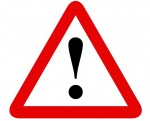Each year the ECRI Institute puts together a list of technology hazards with the intent of informing healthcare facilities of the potential dangers with certain technologies in an effort to help prevent adverse events. Alarm hazards has been the top item in previous years, but for 2016, dirty endoscopes made the unfortunate journey to number one following the serious and deadly superbug outbreak.
After examining incidents, testing devices, observing hospital practices, reviewing literature, and interviewing clinicians and other healthcare professionals and suppliers, the institute’s Health Devices Group puts together the list based on what it considers to be current priority risks (these risks are also avoidable or can at least be minimized). The group takes the severity of the hazard into consideration, along with its frequency, breadth, insidiousness, profile and preventability before making the final decision. The hazards on the list are generic, meaning that they do not relate to a specific device model or manufacturer.
ECRI’s Top 10 Health Technology Hazards for 2016
- Flexible Endoscopes: Inadequate cleaning prior to disinfection can spread deadly pathogens
- Missed Alarms: Failure to respond can lead to serious injury or death
- Failure to effectively monitor postoperative patients for opioid-induced respiratory depression can lead to brain injury or death
- Inadequate surveillance of monitored patients in a telemetry setting
- Insufficient training of clinicians on OR technologies
- Errors due to lack of HIT configuration with facility processes and workflow
- Unsafe injection practices expose patients to infectious agents
- Gamma camera mechanical failures can result in serious injury or death
- Intensive care ventilators: Failure to properly operate can lead ventilator-induced lung injuries
- Misuse of USB ports can cause medical device malfunction
An executive brief of the report is available for download on ECRI’s website.







